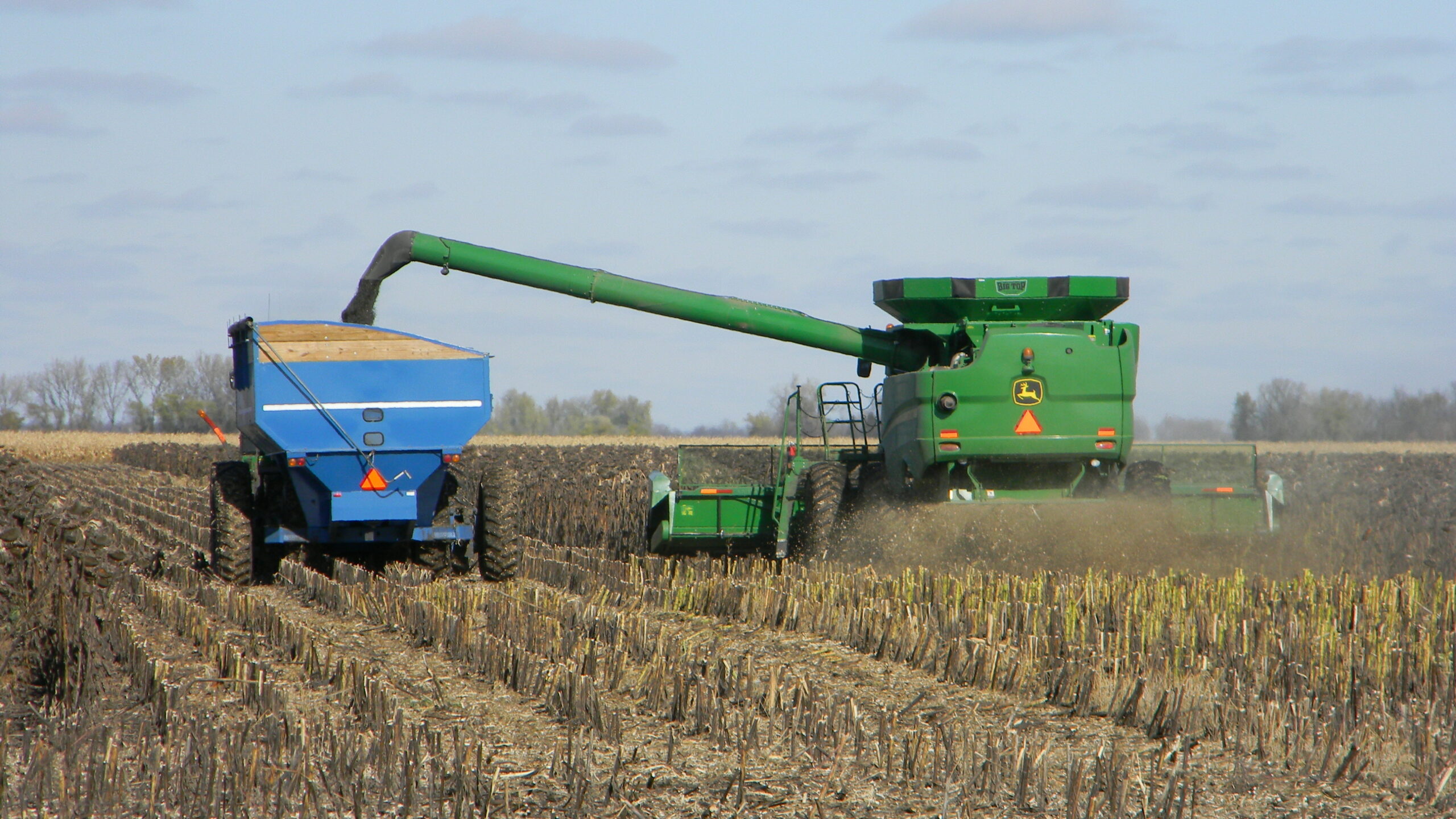In order to grow the best crop of any kind, farmers are well aware their machinery must be working properly, and that settings and speeds must be correct. Here are some general and sunflower-specific tips to consider to optimize harvesting equipment.
After you’ve taken care of your crop all season it’s important to prepare for a successful harvest. Experts say that out of all the steps in sunflower production, harvesting gets the least attention. Minor adjustments to combines can make a big difference, and here are some things to consider to make sure seed harvested is maximized.
After giving the combine a checkover and lubrication, make sure the fan is set at the right speed. Sunflower seeds are lighter than other grains, and adequate air flow keeps trash floating across the sieve. However, if fan speed is too high, you’ll be blowing too much seed out the back. Your target for seeds thrown behind the combine should be less than 10 seeds/ft2, which is 100 pounds per acre of actual yield. However, in the discharge area, note that 40 seeds/ft2 represents a loss of 100 pounds per acre. Some growers use a piece of plastic to block off the back 12” of the cleaning screens to keep more seed in the combine. In addition, to reduce seed loss at harvest, make sure your harvesting equipment is running as close to, if not the same as, the feederhouse on the combine.
At the other end, if fan speed is too low, you’re going to have empties, which will affect the test weight. Industry experts encourage sunflower growers to check desired test weight during the harvest to make sure you are on track. Some blanks will always occur, but the more there are, the lower the test weight.
Regarding the rotor of the combine, if it’s spinning too fast, or if the concaves are set too tight or too loose, you’ll start grinding the seed up and shelling seeds out. Concave settings should be open (cylinder-to-concave spacing of 1” at the front of cylinder and ¾” at the rear).
Ground speed is also important during harvest. You want to keep the combine full so that it will do a good job of threshing and this will likely be somewhere between 3 and 5 mph (4.8 to 8 km/h). However, today’s large combines often need to travel more than 5 mph to keep full.
Cylinder speeds can range from 300 to 500 revolutions per minute, but keep in mind that using the slowest cylinder speed with the largest concave opening results in reduced seed damage.
Remember to mitigate risk of fire. The most important way to do this is to keep the com- bine clean. Growers should blow the combine down at least twice per day and have at least two fire extinguishers on hand. Some growers also use a snorkel extension for the air intake to decrease fire risk.
Although sunflower headers generally require little upkeep, check them twice during the harvest season. At the beginning and end of the year, lubricate them well and check that chains are tight.

Types of Headers
Many sunflower growers adapt combines they use for small grains to harvest this crop. Platform and corn headers require some changes, including the addition of catch pans, a deflector bar and a small reel, but a rotating drum can be used to replace the deflector bar and reel. Row-crop headers don’t require any modifications to harvest sunflowers.
However, it can pay to invest in a sunflower-designed head, as it generally does a better job of harvesting. While the return on investment of purchasing such headers has been debated in the sunflower circle for years, many believe that because they reduce harvest loss – resulting in 300 to 600 more lbs of seed per acre in the combine – they pay for themselves quickly.
There is another advantage to these headers as well, which comes into play when harvesting conditions aren’t optimal. Sunflower-specific headers can make the harvest of downed sunflower crops considerably easier instead of a huge headache because the snouts are designed to get underneath the sunflowers to stand them back up for harvesting.
